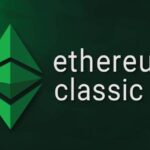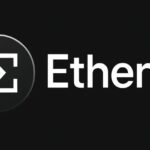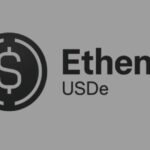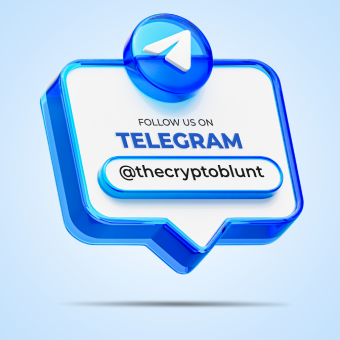A single recovery phrase now controls three separate and incompatible blockchain networks, meaning that MetaMask’s commitment to a multichain approach exchanges ease of use for a higher degree of interconnected risk.
For numerous years, MetaMask served as the essential entry point to the Ethereum network, operating as the browser utility that successfully converted the action of “connect wallet” into a reflex for countless individuals.
Now, Consensys is wagering that this identical behavioral pattern can be applied across various blockchain platforms. In the latter part of May, the transition was enacted by MetaMask for native Solana compatibility, thereby allowing its thirty million active monthly users to handle SOL and SPL tokens without the necessity of setting up Phantom or any competing wallet initially designed for Solana.
Compatibility for Bitcoin is located somewhere on the 2025 development plan; it was originally scheduled for release in the third quarter but has not been launched yet.
If this feature is successfully launched, MetaMask will be established as the inaugural major wallet that natively supports Ethereum, Solana, and Bitcoin. These three distinct digital environments have historically demanded separate applications, recovery keys, and unique conceptual frameworks.
The selected timing is not being presented subtly. Data released by Artemis in June demonstrated that Solana’s monthly active user count was comparable to the total of every remaining layer-1 and layer-2 platform combined.
Solana ceased being merely the “Ethereum alternative” and began instead to resemble the primary venue where a significant number of genuine network participants were consistently appearing.
For MetaMask, an awkward situation was created: the digital wallet possessing the widest reach was lacking support for the blockchain network currently exhibiting the highest volume of activity.
Phantom, the established wallet native to Solana with fifteen million monthly active users and $25 billion in client holdings, had already initiated the inverse strategy, as compatibility for Ethereum and Bitcoin was integrated by the service throughout the year 2024.
The capability of a wallet to manage multiple chains was not a prospective notion; it was already established, and MetaMask was slow to adopt it.
The Unified Experience Vision: One Account, Three Networks
The solution that MetaMask is presenting far surpasses simple feature equivalence. A consolidated asset overview across both Ethereum and Solana is now being provided by the product, featuring integrated functionalities for token exchanges and cross-chain transfers directly within the user interface.
Existing Solana digital wallets can be imported by users utilizing the identical Secret Recovery Phrase that controls their Ethereum private keys, transforming what was once a complex process of switching between multiple applications into a seamless, unified experience.
Once Bitcoin compatibility is made available, the integration cycle will be finalized: a single recovery key and one application screen will unify three completely separate network protocols and underlying security methods.
The benefit of this streamlined access is clearly evident. The associated hazard, though less frequently discussed, is more difficult to dismiss. A singular recovery key now manages secp256k1 keys for EVM networks and ed25519 keys for Solana, with the private key generation method for Bitcoin being next in the sequence.
If a single recovery file is jeopardized, every linked blockchain network is exposed simultaneously. Consensys has released security guidelines concerning this multichain arrangement, but the fundamental compromise persists: increased potential for concurrent failure versus user simplicity.
The integrity of the reliability claim was not assisted by an extension flaw discovered earlier this year, which caused MetaMask to store an unusually large amount of data on SSDs within certain Chromium configurations.
Consensys delivered a patch to resolve the issue, but this incident emphasized how swiftly client confidence can be undermined by flaws at the extension level, a process that occurs much faster than it is built by announcements of new capabilities.
This particular situation is addressed by the concept of account abstraction. Consensys is complementing the multichain deployment with its Delegation Toolkit and the soon-to-be-released EIP-7702 technical standard within Ethereum’s Pectra network enhancement.
These mechanisms facilitate gas fee coverage, the grouping of transactions, and temporary usage authorizations. They collectively form the application layer that allows digital wallets to completely conceal recovery phrases and to carry out sequences of actions without requiring repeated user confirmations.
The ultimate outcome is commonly referred to within the sector as “invisible wallets,” where system participants engage with applications without ever needing to contemplate private keys, transaction fees, or specific network identifiers.
This is a captivating concept, yet EIP-7702 simultaneously introduces new potential channels for fraudulent activity. Harmful decentralized applications can seek extensive authorization that allows them to perform actions in place of users, and the responsibility for separating genuine requests from scams is transferred to the digital wallet itself.
The effectiveness of MetaMask’s security notifications and the intensity with which it highlights cautionary messages concerning delegated authorizations will prove just as important as the improvements to the user experience itself.
Shelf Space as a New Distribution Strategy
The visual designs of digital wallets have been transformed into the essential primary online destination.
If MetaMask displays Solana-based decentralized applications, stablecoin transfer services, and memecoin exchanges within its main interface, millions of users primarily familiar with EVM networks will try Solana, not due to ecosystem research, but because the simplest route was presented to them.
The identical reasoning is applicable to Bitcoin. The count of daily active addresses for Bitcoin generally varies between 700,000 and 1 million, and the introduction of ordinals and inscriptions has transformed BTC into an asset beyond a mere store of wealth.
A dedicated Bitcoin section within MetaMask would permit both Ethereum and Solana users to explore Bitcoin-based digital assets or Lightning payments without changing application interfaces. Furthermore, it would provide users primarily focused on Bitcoin with a compelling incentive to utilize stablecoin exchanges or DeFi services on speedier network protocols.
The key operational question is whether distribution reach alone can influence the center of ecosystem activity. While MetaMask’s thirty million monthly active users significantly outnumber Phantom’s fifteen million, the mindshare among Solana users is held by Phantom, which has invested years developing specialized resources for NFTs, new token releases, and social exploration features.
If just $10 to $18 of its existing user community is converted by MetaMask into regular participants in cross-chain activities within the initial several weeks, this success could mean that a few million individuals are suddenly accessing Solana decentralized applications from a wallet originally designed for Ethereum.
This result is not viewed as a situation where one side takes everything, but it significantly adjusts the competitive environment. Phantom will probably intensify its focus on advanced functionalities and community-led exploration, capitalizing on the attributes that initially established it as the preferred choice for Solana enthusiasts.
MetaMask is placing a wager that an acceptable quality of cross-chain user experience, when combined with the foundational structures of account abstraction, will be considered more beneficial than having specialized, in-depth features.
The Regulatory Cloud and the Race Toward the Super-App Endgame
The SEC initiated legal action against Consensys in June of 2024, asserting that the Swaps and staking functionalities of MetaMask generated over $250 million in service charges without the mandatory broker registration being secured.
Consensys is currently disputing the court’s authority, and although the litigation has not halted their progress, an additional degree of ambiguity is imposed upon every planned product enlargement.
Every subsequent blockchain, exchange pathway, and incoming revenue source invites a renewed and careful examination to be conducted.
Meanwhile, the OKX Wallet functions as a comprehensive super-application, currently supporting more than one hundred network protocols and sophisticated smart account capabilities, which demonstrates what level of functionality can be achieved when governmental oversight is less restrictive.
The Coinbase Smart Wallet adopted a completely divergent approach, leveraging login methods without passwords and built-in digital wallets to surpass one million newly established accounts throughout the summer, with every transaction being executed on Base and within the EVM ecosystem, featuring no visible presence of Solana or Bitcoin.
Coinbase focuses its efforts on clientele who are unaware that a digital wallet is actively being utilized, representing what is widely considered the ultimate objective for achieving widespread consumer acceptance.
MetaMask occupies an intermediate position: it is considered too prominent to evade regulatory oversight, yet it is structured as too decentralized to transition into a fully managed custodial system, and it is recognized as being too influential to disregard the network protocols where consumers are genuinely spending their time.
The initiative to support multiple blockchain networks is driven equally by a necessity for endurance as by aspirational goals. If the proportion of the digital wallet market effectively represents influence over a cryptocurrency ecosystem, then the wallet encompassing the maximum number of networks with the lowest user difficulty will determine the destination of the upcoming wave of users.
Phantom gained initial traction on the Solana and Bitcoin networks, while the strategy of MetaMask is centered on attempting to achieve comprehensive support for “everything simultaneously.”
The competition among digital wallets has transitioned away from simply handling cryptographic keys and toward controlling default user behavior. The entity that dominates the “first tap”—comprising the initial application connection, the debut token exchange, and the specific network that is displayed when a new user launches the platform—will direct where millions of individuals believe cryptocurrency activity actually takes place.
If the Bitcoin feature for MetaMask is deployed before the conclusion of the year, 2026 will commence with a single application screen that regards Ethereum, Solana, and Bitcoin as merely sections in the same internet application rather than distinct ecosystems. At that time, the relevant question will not be which network protocol is victorious, but rather which digital wallet is given the authority to choose.















